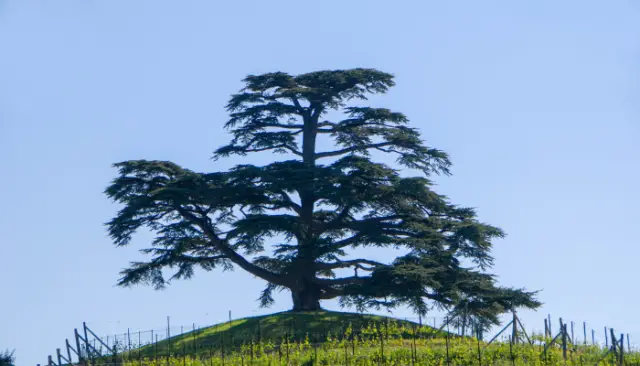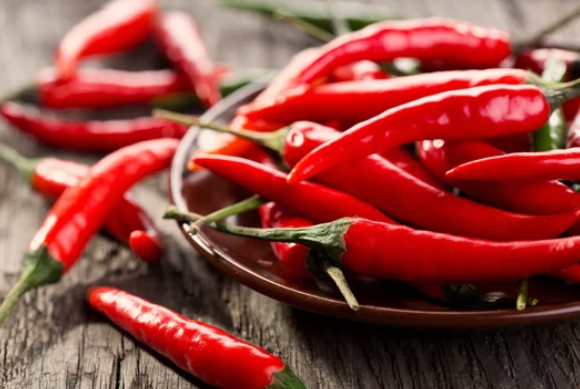How Long Does It Take a Cedar Tree to Grow?
Cedar trees are evergreen conifers that can add beauty and value to your property. They are also useful for creating windbreaks, privacy screens, or hedges. But how long do you have to wait for these majestic trees to reach their full potential? In this blog post, we will explore the factors that affect the growth rate of cedar trees and how you can help them grow faster.
True Cedar vs. False Cedar
Before we dive into the details of cedar tree growth, let’s clear up some confusion about the name “cedar.”. Not all trees that are commonly called cedars are true cedars. True cedars belong to the genus Cedrus, which includes species such as Atlas cedar, Deodar cedar, and Cedar of Lebanon. These trees are native to the eastern Mediterranean, Himalayas, North Africa, and Lebanon and are not very common in North America.

Most of the cedars that you see in North America are false cedars, which belong to the family Cupressaceae (Cypress). These include species such as Western red cedar, Eastern red cedar, Incense cedar, and White cedar. False cedars have small cones and feather-like leaves that are soft and scaly, while true cedars have large, barrel-shaped cones and evergreen needles that grow in clusters on woody spurs.
How do I identify a cedar tree?
There are different types of cedar trees, some of which are not true cedars. To identify a true cedar tree, you need to look at its needles, cones, bark, and size. Here are some general tips:
- True cedar trees have needle-like leaves that grow in clusters on woody pegs along the branches. The needles are usually blue-green or glaucous in color and 1 to 2 inches (2.5 to 5.1 cm) long.
- True cedar trees have large, barrel-shaped cones that grow upright on the branches. The cones are covered in thin scales that fall off when mature. The cones are usually 2 to 4 inches (5.1 to 10.2 cm) long.
- True cedar trees have reddish-brown bark with long scales that can be peeled off easily. The bark is aromatic and may have resin blisters.
- True cedar trees can grow very tall, up to 160 feet (50 m) in height. They have a conical or pyramidal shape when young but become more flat-topped or irregular with age.
There are four species of true cedar trees: Atlas cedar, Cyprian cedar, Himalayan cedar, and cedar of Lebanon. Each species has some distinctive features that can help you identify them. For example, Atlas cedar has dark green foliage and reddish cones; Cyprian cedar has bluish-green foliage and smaller cones; Himalayan cedar has bright green foliage and drooping branches; and cedar of Lebanon has glaucous foliage and large cones.
Factors That Affect Cedar Tree Growth Rate

The growth rate of a cedar tree depends largely on its variety and the care it receives. However, some other factors may influence how fast a cedar tree grows, such as:
Temperature:
Cedar trees can tolerate a wide range of temperatures, but some varieties are more cold-hardy or heat-tolerant than others. For optimal growth, choose a cedar variety that is suitable for your climate zone
Soil:
Cedar trees prefer moist, rich, and well-drained soils. They do not like soggy or compacted soils, which can cause root rot or stunt their growth. Adding organic matter and mulching around the tree can help improve the soil quality and moisture retention.
Fertilizer:
Cedar trees do not need much fertilizer unless the soil is very poor. Applying a high-nitrogen fertilizer in the spring can help boost the growth rate of cedars, but avoid over-fertilizing, which can cause leaf burn or excessive foliage growth at the expense of root development.
Water:
Cedar trees need regular watering, especially when they are young or during dry periods. However, they do not like to be overwatered, which can cause root rot or fungal diseases. Allow the soil to dry out slightly between watering sessions, and check the soil moisture with your finger before watering again.
Variety:
Different types of cedar trees have different growth rates. Some varieties, such as blue atlas cedar, western red cedar, and incense cedar, have a moderately fast growth rate, meaning they can grow 12 to 24 inches per year. Others, such as weeping cedar, white cedar, and Cyprus cedar, have a slow growth rate, meaning they can grow less than 12 inches per year.
How Do You Make Cedar Trees Grow Faster?

If you want to speed up the growth of your cedar trees, here are some tips that can help:
- Choose a sunny location for planting your cedar trees, as they need at least six hours of direct sunlight per day to grow well.
- Plant your cedar trees at the right time of year, preferably in the spring or fall, when the soil is moist and the temperatures are mild.
- Dig a hole that is three times the size of the root ball, and mix some compost and native soil to fill the hole. This will provide good drainage and aeration for the roots, as well as some nutrients.
- Stake your cedar trees for the first year or two to help them establish a strong and straight trunk. Use a soft and flexible material, such as garden twine, to tie the tree to the stake, and check regularly for any signs of damage or girdling.
- Prune your cedar trees lightly and selectively to remove any dead, diseased, or damaged branches, as well as any branches that are crossing or rubbing against each other. Avoid pruning too much or too often, as this can reduce the growth rate and the natural shape of the tree.
- Protect your cedar trees from pests and diseases, such as cypress tip moth, root weevil, mites, juniper scale, and cedar-apple rust. These can cause symptoms such as brown or yellow foliage, reduced sap flow, white cocoons, or black sooty mold. You can use horticultural oil or insecticide to treat infestations, but always follow the label instructions and precautions.
- Protect your cedar trees from animals and mechanical damage, such as dogs, rodents, lawnmowers, or weed whackers. These can chew on the bark or injure the trunk, which can expose the tree to infections or slow down its growth. You can use a wire cage or a piece of landscape fabric to shield the tree from harm.
How Long Does It Take a Cedar Tree to Mature?
The time it takes for a cedar tree to mature depends on various factors, such as the type of cedar, the location, the growing conditions, and the desired size. Generally speaking, cedar trees can take 25 to 30 years to reach their full size, which can range from 20 to 80 feet in height and 10 to 40 feet in width. However, some varieties may take only 10 to 15 years to mature, while others may take longer than 30 years. Also, the growth rate of a tree tends to slow down as it ages, so the older the tree, the slower it grows.
Conclusion
Cedar trees are magnificent and versatile trees that can enhance any landscape. They can grow fast or slowly, depending on the variety and the care they receive. By following the tips in this blog post, you can help your cedar trees grow faster and healthier and enjoy their beauty for many years to come.
If you want to learn more about cedar trees, you can check out these sources:
Frequently Asked Questions on the Topic of How Long Does It Take a Cedar Tree to Grow?
Q: What is the difference between true cedar and false cedar?
- True cedar trees belong to the genus Cedrus and have needle-like leaves, large cones, reddish-brown bark, and a tall and conical shape. False cedar trees belong to the family Cupressaceae and have scaly leaves, small cones, gray or brown bark, and a variable shape.
Q: How can I choose the best cedar variety for my climate zone?
- You can check the USDA hardiness zone map to find out the minimum winter temperature in your area, and then compare it with the hardiness range of different cedar varieties. For example, Atlas cedar is hardy in zones 6 to 9, while Eastern red cedar is hardy in zones 2 to 9.
Q: How often should I water my cedar trees?
- You should water your cedar trees regularly, especially when they are young or during dry periods. However, you should avoid overwatering, which can cause root rot or fungal diseases. A good rule of thumb is to water your cedar trees once a week, or more frequently if the soil feels dry to the touch.
Q: How much fertilizer do my cedar trees need?
- Cedar trees do not need much fertilizer unless the soil is very poor. You can apply a high-nitrogen fertilizer in the spring at a rate of 1/4 pound per inch of trunk diameter. However, you should avoid over-fertilizing, which can cause leaf burn or excessive foliage growth at the expense of root development.
Q: How do I prune my cedar trees?
- You should prune your cedar trees lightly and selectively to remove any dead, diseased, or damaged branches, as well as any branches that are crossing or rubbing against each other. You should avoid pruning too much or too often, as this can reduce the growth rate and the natural shape of the tree. The best time to prune your cedar trees is in late winter or early spring, before the new growth starts.
Q: How do I protect my cedar trees from pests and diseases?
- You should inspect your cedar trees regularly for any signs of pests and diseases, such as brown or yellow foliage, reduced sap flow, white cocoons, or black sooty mold. You can use horticultural oil or insecticide to treat infestations, but always follow the label instructions and precautions. You should also keep the area around your cedar trees clean and free of weeds, debris, or fallen leaves, which can harbor pests or diseases.
Q: How do I protect my cedar trees from animals and mechanical damage?
- You should protect your cedar trees from animals and mechanical damage, such as dogs, rodents, lawnmowers, or weed whackers. These can chew on the bark or injure the trunk, which can expose the tree to infections or slow down its growth. You can use a wire cage or a piece of landscape fabric to shield the tree from harm. You should also avoid planting your cedar trees too close to roads, sidewalks, or buildings, which can limit their space or cause salt damage.
Q: How do I transplant my cedar trees?
- You should transplant your cedar trees carefully to avoid damaging their roots or shocking them. You should choose a sunny location with moist, rich, and well-drained soil and dig a hole that is three times the size of the root ball. You should water the tree well before and after transplanting and stake it for the first year or two to help it establish a strong and straight trunk. The best time to transplant your cedar trees is in the spring or fall, when the soil is moist and the temperatures are mild.
Q: How do I propagate my cedar trees?
- You can propagate your cedar trees through seeds or cuttings. To propagate seeds, you need to collect the ripe cones in the fall and extract the seeds by breaking the scales. You need to stratify the seeds in a refrigerator for a few months, and then sow them in pots or trays with moist potting mix. You need to keep the seeds in a warm and bright place and water them regularly. To propagate by cuttings, you need to take 6 to 8 inch (15 to 20 cm) long cuttings from healthy and vigorous branches in late summer or early fall. You need to dip the cut ends in rooting hormone and insert them in pots or trays with moist potting mix. You need to keep the cuttings in a cool, humid place and mist them daily.
Q: How do I use my cedar trees for landscaping purposes?
- You can use your cedar trees for various landscaping purposes, such as creating windbreaks, privacy screens, or hedges. You can also use them as specimen trees, focal points, or background plants. You can choose different cedar varieties to create contrast, harmony, or diversity in your landscape. You can also combine your cedar trees with other plants that have similar or complementary characteristics, such as color, texture, or shape.
- Did You Know How Fast Do Cedar Trees Grow?
- Cedar Tree Care: Tips For Growing Cedar Trees—Gardening Know-How








